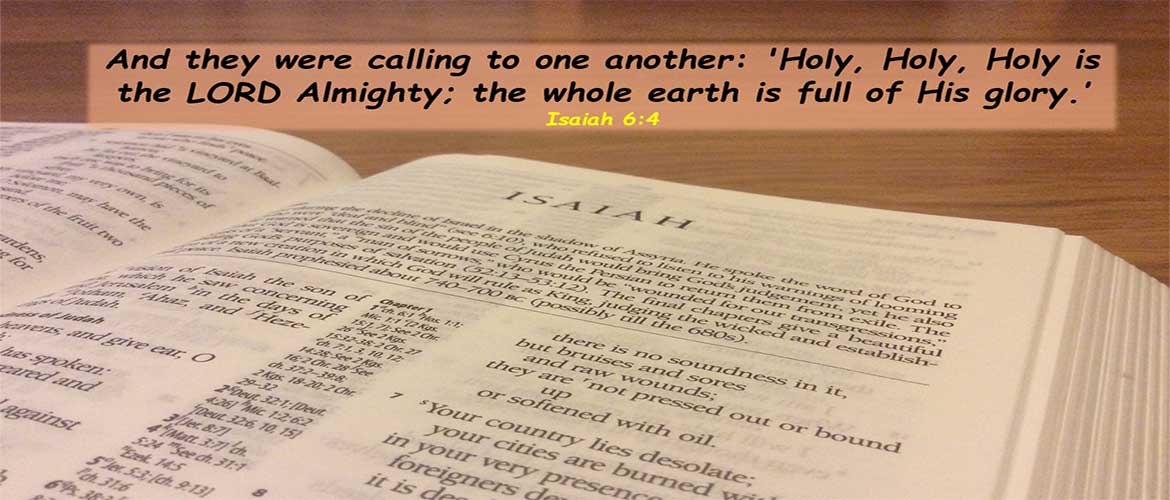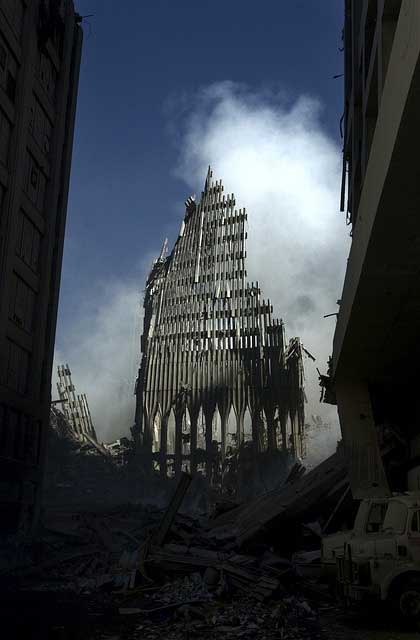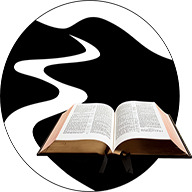
Hello my “Walking with Jesus” friends,
As you think back over your lifetime, you probably have some key events which are very significant for you. You remember exactly where you were when it happened. If you are of the “builder generation” perhaps it’s the news of Japan’s attack on Pearl Harbor, December 7, 1941, or maybe if you’re of the “boomer generation” it was the assassination of President John Kennedy, November 22, 1963? Or if you are a ‘millennial’ it is September 11, 2001 and the jet plane attacks of the Twin Towers in NYC and the Pentagon in Washington, DC?
If you live in another country of the world there are probably major events in your country which have marked your life. Today, let’s return back to Jerusalem, Israel for a major event which shaped the lives of many people and Biblical history.

The year was 740bc. Three years before the Assyrian Emperor Tiglath Pilesar had invaded the northern kingdom of Israel, as we saw yesterday, and Israel’s King Menahem had paid a high financial price for Tiglath Pilesar to leave Israel, taking his army with him back to Nineveh. One year later King Menahem died and his son Pekaiah assumed the throne but only for two years. He was assassinated by one of his officers Pekah who then took the throne of Israel, in 740bc. (2 Kings 15:27,28)
The prophet Jonah had died several years before but God raised up two more prophets to challenge the northern kingdom leaders with God’s truth, His conviction and His call back from their violence and idolatry. Those prophets after Jonah were named Amos and Hosea. Their God messages were spoken to the kings and then written and preserved in our Bible as the little books which bear their names. Sadly all the northern kings of Israel during this period ignored these prophets of God.
Simultaneously in 740bc in the southern kingdom Judah, King Uzziah was dying after living in isolation with the disease leprosy for more than 10 years, while his son King Jotham was co-regent with him of Judah. (2 Chronicles 26:21-23) God had struck Uzziah with leprosy because he had violated the Holy Place of the Temple in Jerusalem. (2 Chronicles 26:16-20) At King Uzziah’s death his body was buried without fanfare and not with the tombs of the kings.
As God had sent prophets to the northern kings of Israel so God now was sending prophets to the southern kings of Judah, specifically Micah and Isaiah. The death of King Uzziah, who had reigned in Judah for 52 years, was particularly traumatic for the young prophet Isaiah who was in Jerusalem at the time. Isaiah’s written record of that day is one of the most significant moments in Israel’s history and let’s look there today, my friends.
Isaiah 6:1 is the prophet’s autobiography of that fateful day: “In the year that King Uzziah died, I saw the LORD, high and exalted, seated on a throne and the train of his robe filled the Temple. Above Him were seraphim, each with six wings: With two wings they covered their faces, with two wings they covered their feet and with two wings they were flying. And they were calling to one another: ‘Holy, Holy, Holy is the LORD Almighty; the whole earth is full of His glory.’ At the sound of their voices the doorposts and thresholds shook and the Temple was filled with smoke…” (Is. 6:1-4)
It would seem Isaiah was in a place of deep remorse and contemplation at the news of King Uzziah’s death. Perhaps young Isaiah had gone up into the Temple courts for prayer and while there he received this overwhelming vision from God. It’s a remarkable vision isn’t it? It was overwhelming to Isaiah. I wonder what strikes you most about Isaiah’s vision? Is it the vision of God on His majestic throne?
Amazing isn’t it how similar that is to what the apostle John saw in his vision of God as recorded in Revelation 4 & 5? Could it be God was giving both Isaiah and John a similar view of His great heavenly throne room, even though these two men of God lived almost 2800 year apart? You will find it very interesting if you read both of those visions one after the other.
Are you awed by Isaiah’s vision of these angelic beings he calls “seraphim”? We know Angels appear in many places throughout the Biblical story, both Old and New Testament. Angels are a special race of beings God created and holy angels reside with God in heaven. They come from heaven, sent by God on specific assignments. Sometimes they communicate a specific message to a specific person, as Gabriel did with Zechariah in the Temple, announcing the miraculous pregnancy for Elizabeth, his wife, and that their son, whom they would name John, would become the fore-runner of Jesus Christ the Messiah. (Luke 1:8-20)
Sometimes angels were sent by God to protect His people and inflict judgment as happened in Sodom & Gomorrah. (Genesis 19) Sometimes angels appeared in human form, (Judges 13:8) sometimes they came with blinding light as did the angels the women saw at Jesus’ resurrection. (Matt. 28:2,3) While the Bible doesn’t tell us exactly how many angels there are, in John’s Revelation vision he uses some astronomical numbers to explain how many angels he saw: “Then I looked and heard the voices of many angels, numbering thousands upon thousands, 10,000 times 10,000. They encircled the throne and the living creatures and the elders….” (Rev. 5:11) You’ll probably need a calculator to figure out how many angels John saw!
We know the Bible teaches us that while God created ALL angels holy, a large group of them rebelled against God and God cast them out of heaven allowing them to establish an evil kingdom with their leader Lucifer, also known as Satan. (Is. 14:12-15 & Ez. 28:11-18) These rebellious angels and their leader the devil are always opposed to God, God’s Truth, God’s people, God’s kingdom and God’s purposes in our world. (John 8:44) These rebellious angels are called ‘demons’ or ‘evil spirits’ and Jesus confronted them often, always victoriously, freeing people from their devilish influence and even strongholds. (Mark 1:21-25; 5:1-13)
Isaiah’s remarkable vision does not tell us how many of these six winged holy angels he saw, but his description of them in Isaiah 6:2 is only found in one other place and that’s John’s vision in Revelation 4:8. John describes them as “four living creatures” with six wings and eyes all around. The name ‘seraphim’ is derived from words describing burning, bright flames.
These “seraphim” seem to be distinctively different from angelic beings called “cherubim” which have two wings, golden images of which were fabricated for the cover of the Ark of the Covenant (Ex. 25:17-20). You may recall God had assigned “cherubim” to guard the Garden of Eden after He had cast Adam and Eve out of the garden. (Gen. 3:24) These “seraphim” in Isaiah’s vision seem to have as their focus as the glory of God’s Presence and their purpose the proclamation of God’s Majesty through their calling to each other “Holy, Holy, Holy is the LORD God Almighty, the whole earth is full of His glory.”
Isaiah was absolutely overwhelmed by what he saw. But it was more than their appearance, for Isaiah reports: “At the sound of their voices the doorposts and thresholds shook and the temple was filled with smoke.” (Is. 6:4) Does that sound similar to what happened at that same great temple 200 years before when King Solomon and the priests were dedicating the Temple and God sent fire from heaven to burn up the sacrifices on the great altar and then God filled the Temple with the cloud of His Presence? (2 Chronicles 7:1-3)
I’m sure Isaiah knew that Scripture well and perhaps was even reflecting on it in his prayers of grief at the death of King Uzziah. I have no doubt Isaiah was flat on his face, prostrate on the ground in response to this great vision of God and the “seraphim” angels praising God.
So I think we should pause here along with Isaiah and allow our hearts and minds to be overwhelmed with God’s Majesty and His Holiness, and tomorrow we’ll come back here to see what God and Isaiah experienced together next! Here’s a worship song to help us consider this great vision of God’s glory.
Bible images provided with attribution to www.LumoProject.com.
Have a comment or question about today’s chapter? I’m ready to hear from you, contact me here.

Pastor Doug Anderson
“Let us run with perseverance the race marked out for us, with our eyes fixed on Jesus…” (Heb. 12:1,2)
Archived back issues of “Walking with Jesus” and other resources are available by clicking here to open our ‘home page’ (or go to HOME at upper right of this page).
Share with friends. Subscribe below for daily “Walking with Jesus”.


